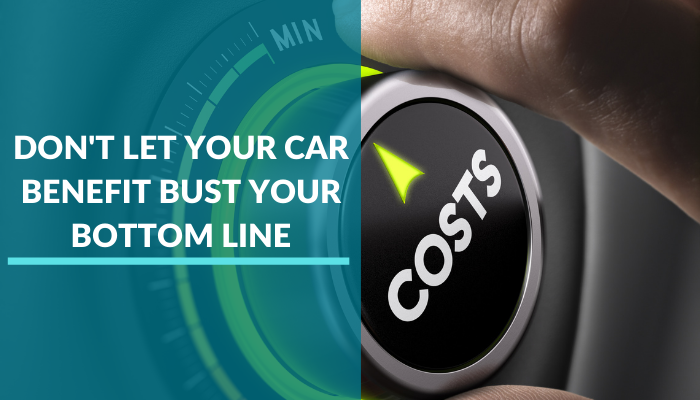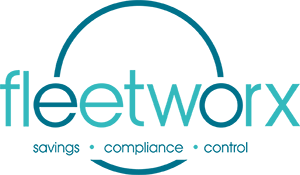
13 Sep Don’t let your company car benefit bust your bottom line
8 Tactics to Improve Your Company Car Benefit and Remove Cost
According to two industry indicators the company car market remains in rude health, with both studies underpinned by the realisation that company cars are still an integral part of a competitive reward strategy.
The 2022 Arval Mobility Observatory shows that 94% of companies surveyed expect fleets to remain stable or grow over the next 3 years. 65% anticipate a growth in their business, whilst nearly 1 in 3 see company cars as an important lever for talent recruitment. (in fact 18% regard this as so important they are extending company cars to previously ineligible employees).
Recognising the strategic importance of company car benefit is echoed in the Towers Watson 2021 Car Benefits Survey Report. Well over half of UK companies plan to review their company car benefit policies over the next year, with 71% stating the most common reason was staying competitive and aligning with best practices.
Recovery from the pandemic has spotlighted the global war to recruit and retain the best talent, and the attractiveness of company car benefits to professional, managerial, executive and other client-facing staff is both powerful and indisputable; in some markets it can be a dealbreaker. Organisations are now scrutinising what’s available and benchmarking themselves against the market.
Both reports prove company car benefit remains a key strategic initiative and is integral to the wider growth strategy of using “total reward” for competitive advantage.
Company car fleet is a significant investment for any business. Good company car benefit design is therefore essential to control cost, the balance of which creates a sweetspot of a cost-effective car list that is highly valued by the employees.
Macro environmental issues are making this sweetspot harder to reach, as inflation and semiconductor shortages hit vehicle prices, pushing lease costs higher.
So how do companies mitigate these cost pressures and ensure company car benefit doesn’t bust the bottom line.
#1 Efficient funding
Contract Hire or ‘Full Service Lease’ as it is more universally known, is widely considered an efficient funding mechanism as it offers considerable tax advantages for the lessee whist ‘de-risking’ the vehicle ownership. It does however deliver considerable profit opportunities for the lease companies, amongst them some considerable ‘windfall profits’ as we have recently witnessed in the booming vehicle re-sale market. The alternatives, where the client accepts some risk and reward in the process, should not be discounted, if the mechanisms for measuring and distributing windfalls can be established with the lease or fleet management company.
#2 Tightly managed invoice processing
The Accounts Payable (AP) department of an organisation with a large company car fleet will be dealing with hundreds of invoices and thousands of line items, all issued from various suppliers. Although AP can validate the invoice against the original PO number, value and VAT, they are unable to verify if the invoices can be assigned to identifiable assets in the supply chain.
They are unable to review the invoice against what is expected from the contract, they cannot challenge cost items against the contractual terms, and they are unable to track duplicates. This can cause significant problems for a car fleet operator and erroneous costs can quickly escalate.
Specialist supply chain experts such as Fleetworx have operations teams dedicated to the management of supplier invoices, ensuring all are checked against the contractual terms of that vehicle and errors or duplicates are reviewed with the supplier, with the potential to save significant cost.
#3 Lessor Compliance
Creating watertight commercial terms is the objective for any procurement professional. However, the subsequent monitoring of these commercial elements can be challenging, especially when resources are scarce.
As contracts mature, the many commercial elements that should be applied to the letter, month after month, year after year, tend to creep and slip through unnoticed, and this is where dedicated compliance teams can make a real difference. Drawing on this resource means often quite complex calculations, such as early terminations, profit share/rebates, discount terms etc, are monitored to ensure compliance, making sure you get the full value of what has been agreed.
Fleetworx has dedicated ops teams that have experience in highlighting large areas of financial oversights from suppliers, resulting in the successful recovery of over £4m for one fleet operator alone.
#4 Use Total Cost of Ownership
Using Total Cost of Ownership, or whole-life cost, to understand your cost exposure is, surprisingly, an often-overlooked tactic for containing cost. The leasing cost on your monthly invoice is only part of the cost story, and building your car list around this headline cost can create overspend against alternative vehicles that may deliver a better whole-life cost.
This is particularly true of electric vehicles, where the upfront leasing cost tends to be more expensive, but the whole-life cost is lower. Indeed, this report suggests that EV’s would have a lower TCO than 40% of fleet vehicles.
This list shows the elements that make up the whole life cost of a vehicle:
- Depreciation – generally the largest cost component that makes up a vehicle TCO. We should be open minded to optimising the vehicle retention period to reduce the annual depreciation incurred. This is particularly pertinent when we look at EV’s, where higher vehicle cost prices can be offset over longer lease periods due to the lower maintenance costs.
- Fuel – typically the second largest cost element of fleets. Fuel efficiency is obviously integral to controlling cost, especially when faced with the rampant pump prices. The cost of charging an EV is still significantly less than running a petrol/diesel car, as of April 22, comparison website Compare the Market found that EV’s cost £600/year less than their petrol equivalent.
- Service maintenance and repair (SMR) – controlling this cost is easier said than done, but keeping a watching brief on this cost category will keep it from escalating unchecked. The argument for EV’s is particularly strong as EV’s generally have lower service costs due to fewer moving parts.
- Corporate tax – this cost is dictated by your car list choice and the availability, and popularity, of lower CO2 emission vehicles against fuel gorgers! Users of EV’s are rewarded both personally, the BiK in the UK is currently 2%, and corporately, with most countries in Europe adopting a low taxation regime for EV’s. In France, for example, corporate users of EV’s are exempt from the TVS and Malus tax.
- Accident & Insurance – an unavoidable cost, but having systems in place to review data will highlight areas of concern.
Allowing these costs to go unmanaged means they quickly disappear into the mix and can’t be controlled. They do all get wrapped up against the fleet category, but isolating them means they take on an identity, becoming easier to understand, and track and control, ultimately bringing down the whole cost of the category.
#5 Manage End of Contract Costs
When a vehicle lease term comes to an end the vehicle is returned to the lessor, or the contact is extended (see below). What many people may not realise is that the vehicle is then sold on by the lessor, generating profit. Agreeing a share of these profits for the fleet owner is a perfectly acceptable negotiating strategy and should be built into the initial contract. If it is not then experts such as Fleetworx can help negotiate acceptable gain on sale terms for the fleet owner. Applying this to the contracts of the whole fleet can result in quite a substantial windfall for the fleet owner.
#6 Extend contract terms
If vehicle shortages put a squeeze on new vehicle availability and vehicles are held longer than the original contract term, (Arval Mobility Observatory suggest average ownership is now 5.6 years compared with 4.8 last year) then it is not uncommon for lessors to propose or even force through a contract amendment with fresh pricing.
To let this happen uncontested can prove a risk for fleet owners, as the new pricing cannot always be audited and such contract adjustments have been known to favour the lessor unless adequately challenged.
Where a contract adjustment is not applied then letting a contact run beyond its original term usually results in that deviation being managed through an informal extension and excess mileage programme. These differ widely from supplier to supplier and country to country, and a poorly constructed excess mileage agreement can be expensive; and unless negotiated at the creation of the contract these agreements are nearly always stacked in favour of the lessor.
These potentially expensive over-runs can be avoided by formally extending any contract that will become over-term. It is important to establish any direct costs/fees associated with contract resets and negotiate effectively to ensure a fair recalculation.
#7 Flick the electric switch
Petrol and diesel engines continue to lose appeal across EMEA (-33.3%) during Q1 ’22, whilst sales of battery electric vehicles continue their huge surge in popularity, having increased by 53%, and now making up 10% of all sales.
Interestingly the latest research from the EY Mobility Consumer Index shows that the market for EV’s has reached a tipping point with 52% of respondents looking to buy an EV as their next car: a significant shift and the first time the number has exceeded 50%, a staggering rise of 22% in just 2 years!
So, the latent demand is there, and this is spilling over into the company car market. And as mentioned above, if TCO is used to manage your cost structure then there is a powerful argument for introducing BEV’s into your company car fleet and reducing your fleet category cost.
#8 Employ Experts
Managing car fleet is complex and resource intense. It is often shoe-horned into the responsibility of departments who have no real expertise in dealing with the nuances of the company car supply chain.
The result of which is a shift in the balance of power from the client to the supply chain which, if allowed to continue, will create cost-creep and margin spread. Experts such as Fleetworx look after more than 11,000 vehicles across 27 countries, with systems in place to control all fleet related costs and ensure the supply chain follow contractual terms.
Fleetworx work with clients across a variety of sectors, from healthcare to high tech and always deliver a ROI of at least 5:1. To arrange a free 1-hour fleet consultation contact Graham Rees on +44 (0) 1926 353 300 or complete this form and we will contact you.
Back to Blogs Back to Case Studies List

Sorry, the comment form is closed at this time.